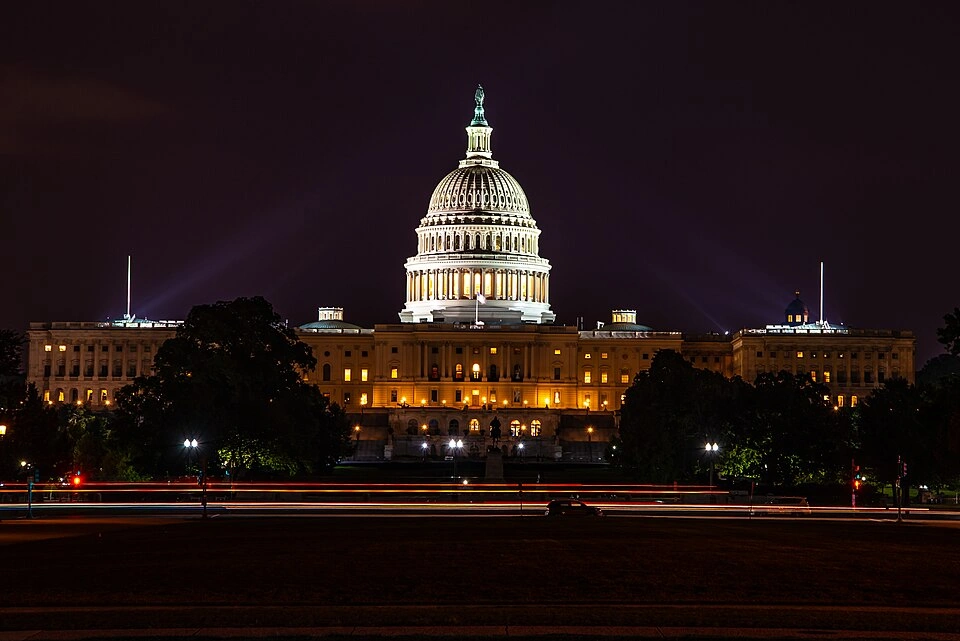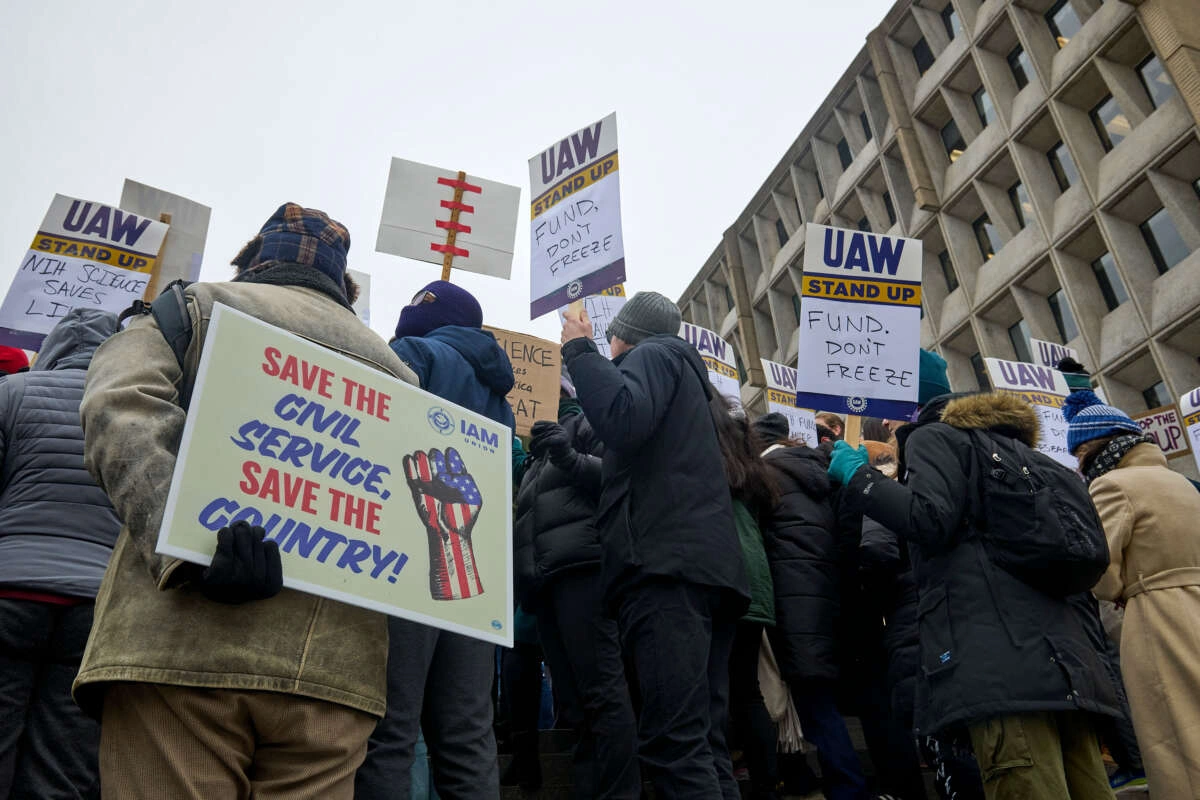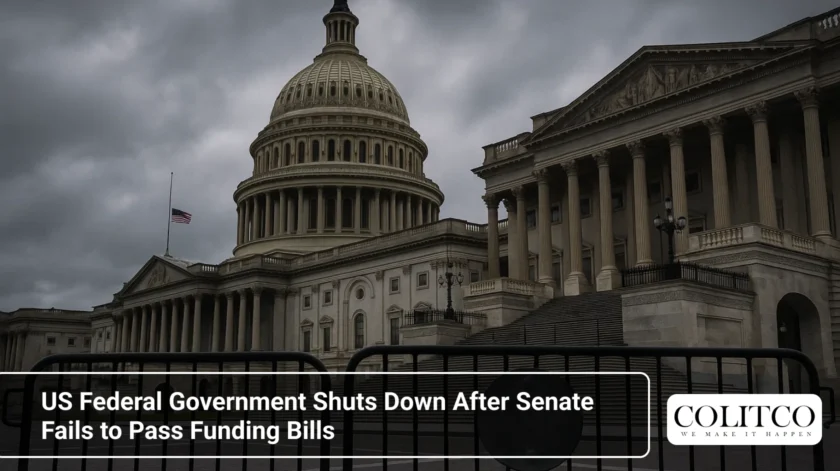Both parties trade blame as hundreds of thousands face unpaid leave and critical services stall
At 12:01 a.m. on Wednesday, the United States federal government officially shut down because the Republican-backed and the Democrat-backed funding proposals did not pass the Senate. The standoff puts millions of workers under unpaid furloughs or under the obligation to work without pay, with some essential public services on the verge of disruption.
Shut down due to Senate Deadlock
On Tuesday night, Senate legislators rejected two different measures. A Democratic-supported bill, which would have extended Affordable Care Act subsidies and countered Medicaid cuts, also failed. A Republican-supported stopgap bill, which would have kept the government operating for seven more weeks, also failed.
 The US Capitol in Washington, DC, where budget talks collapsed leading to the 2025 shutdown.
The US Capitol in Washington, DC, where budget talks collapsed leading to the 2025 shutdown.
Following the unsuccessful votes, White House Budget Director Russell Vought instructed federal agencies to implement their plans to shut down in a well-organized and orderly manner.
Political Leaders Trade Blame
Accusing the Republicans of taking a my-way-or-the-highway strategy, Senate Minority Leader Chuck Schumer urged them to come to the table and negotiate.
According to Vice President JD Vance, the Democrats have refused to compromise, as he said, I think we are going to a shutdown because the Democrats will not do the right thing.
According to Republican leaders, the demands by Democrats for Medicaid protections and extended tax credits are holding up a clean funding resolution. Democrats claim that republicans are more concerned with cuts than needed health care.
Impact on Federal Workforce
The shutdown may impact almost 4 million federal employees, including 2 million active-duty service members. All troops will still be required to report to duty, but they will not receive remuneration until the money is reinstated.

Federal workers face furloughs and delayed pay during the shutdown.
Other vital workers, such as air traffic controllers, TSA officers, and ICE agents, are also expected to work without remuneration. There will be no work for federal contractors, such as janitorial and security staff, and no guarantee of back pay.
Agencies such as the Justice Department, Health and Human Services, and the Department of Labour will run at a more limited capacity, with thousands of employees being furloughed.
Shutdown Priorities at Pentagon
The Department of Defence verified that it will not cease active-duty military operations and that it will prioritize resources with regard to border protection, overseas operations, and the development of the Trump missile defence system, the so-called Golden Dome.
The Pentagon, however, expressed that the service personnel will likely lose their wages for the first time in decades unless back-pay legislation is passed very quickly by Congress.
Public Services Affected
National parks and Smithsonian museums will likely be shut within days, and the Food and Drug Administration announced it would also pause pre-market food safety review. This puts into question the safety of meat, milk, and eggs as they make it to the food supply.
The Department of Labour declared that it will also pause active data gathering, postponing the publication of the monthly jobs report, which is one of the major economic data points to monitor in the markets.
Though Social Security, Medicare, and Medicaid payments will remain intact, other related services may slacken a lot. The Women, Infants, and Children (WIC) program that serves about seven million households may run out in a week.
Economic and Market Response
The Congressional Budget Office calculates that federal furloughs would cost about 400 million dollars in a single day.
Wall Street mostly dismissed the shutdown on Tuesday, and the Dow Jones Industrial Average ended the day at an all-time high. Nonetheless, US stock futures indicated more weakening of the market on Wednesday, and gold prices reached a historic $3,872 an ounce as investors sought safe havens.
Historical Context
This is the 21st federal government shutdown since 1977. The most recent in late 2018 was 35 days and was the longest in US history. According to the Congressional Budget Office, a total of $3 billion in economic activity was permanently lost as a result of that closure.
Final Thoughts
The timeframe of the ongoing shutdown is not clear. Both sides are holding their ground, and the pressure is mounting on Congress to reach common ground. Until such a compromise is achieved, federal employees, army officers, and millions of Americans who depend on government services are left in increasing uncertainty.
FAQs on the US Federal Government Shutdown
- What caused the 2025 US government shutdown?
The shutdown was triggered after the Senate failed to pass both Republican- and Democrat-backed funding bills. Lawmakers were unable to agree on a budget, leading to a lapse in government funding. - How many federal workers are affected by the shutdown?
Nearly 4 million federal employees are impacted. About half will be furloughed without pay, while others, including active-duty military and essential workers, must continue working without immediate pay. - Will military personnel still be paid during the shutdown?
No. Active-duty troops are required to report for duty, but they will not receive pay until Congress approves funding or passes a back-pay measure. - Which public services will stop during the shutdown?
National parks, Smithsonian museums, and other federally funded facilities will close. The Food and Drug Administration will halt most food safety inspections, and the Department of Labor will suspend jobs data collection. - Are Social Security and Medicare benefits affected?
No. Social Security, Medicare, and Medicaid payments will continue. However, support services may slow, and some programs, like the Women, Infants and Children (WIC) program, could run out of funds. - How much does the shutdown cost the US economy?
According to the Congressional Budget Office, furloughs cost about $400 million per day. Previous shutdowns have also led to permanent economic losses. - How long could this shutdown last?
The duration is uncertain. Past shutdowns have lasted anywhere from a few days to over a month, depending on how quickly lawmakers reach a compromise. - How does this shutdown compare to previous ones?
This is the 21st shutdown since 1977. The longest occurred in 2018, lasting 35 days and costing the economy billions of dollars in lost activity.












